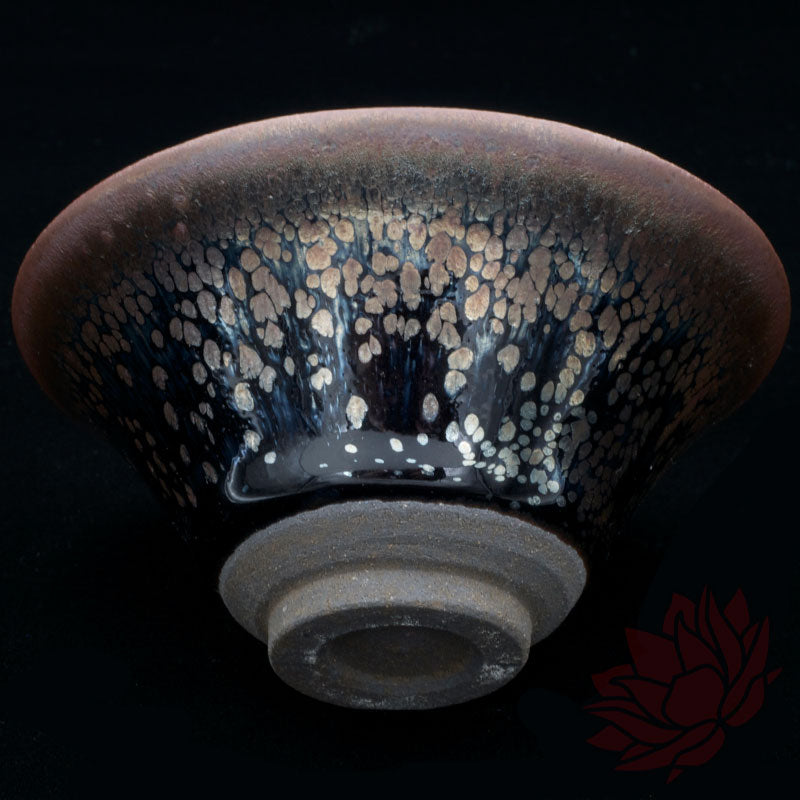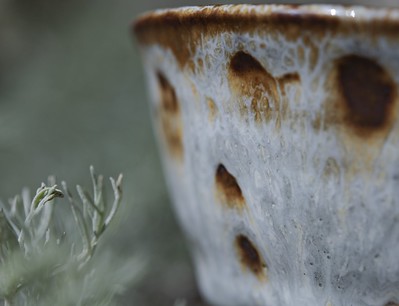Jian ware (建盏) were first in use during the Song Dynasty (1127–1279) in Fujian, China during which time white tea was ground and whisked into a milky white froth (like green matcha today). This whisked milky white tea contrasted nicely against the oil-spot darker glazes developed at the time. In China the special Jian glazing technique was completely lost until it was reintroduced by the Japanese centuries later. Apparently only three intact Jian tea bowls still exist, all are in Japanese museums and designated as National Treasures. Japanese Buddhist monks returning from China brought these tea bowls into Japan during the 13th century, where since that time they have been artisanaly crafted, developed and held in high esteem. Most are made out of stoneware with two common types of glazes applied - Yohen (kiln change & hares-fur) and Yuteki (iron oxide oil spotting). The success rate in achieving desired glazing effects is extremely low, under 1%, and only a very few true Yohen Tenmoku pieces are made by an artist each year. Fake replicas are easy to find though. Today matcha drinkers enjoy using Tenmoku with the bright green froth contrasting the darker oil-spotted and hares-fur glazes.
A few well known 20th C Tenmoku artisans include:
KIMURA Morinobu (木村盛伸) [born 1932]
YOSHINORI Izumi (和泉良法) [born 1947]
KAMADA Kōji (鎌田幸二) [born 1948]
HAYASHI Kyōsuke (林恭助) [born 1962]
NAGAE Sōkichi IX (長江惣吉) [born 1963]
OKETANI Yasushi (桶谷寧) [born 1968]
here's an example of a modern piece @pedant shared earlier in the Kyō-yaki topic:








